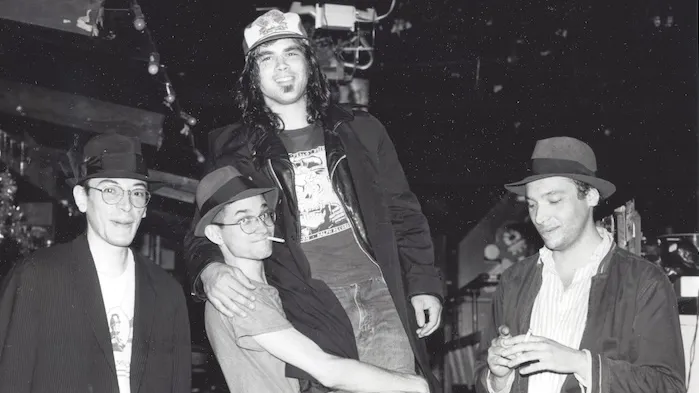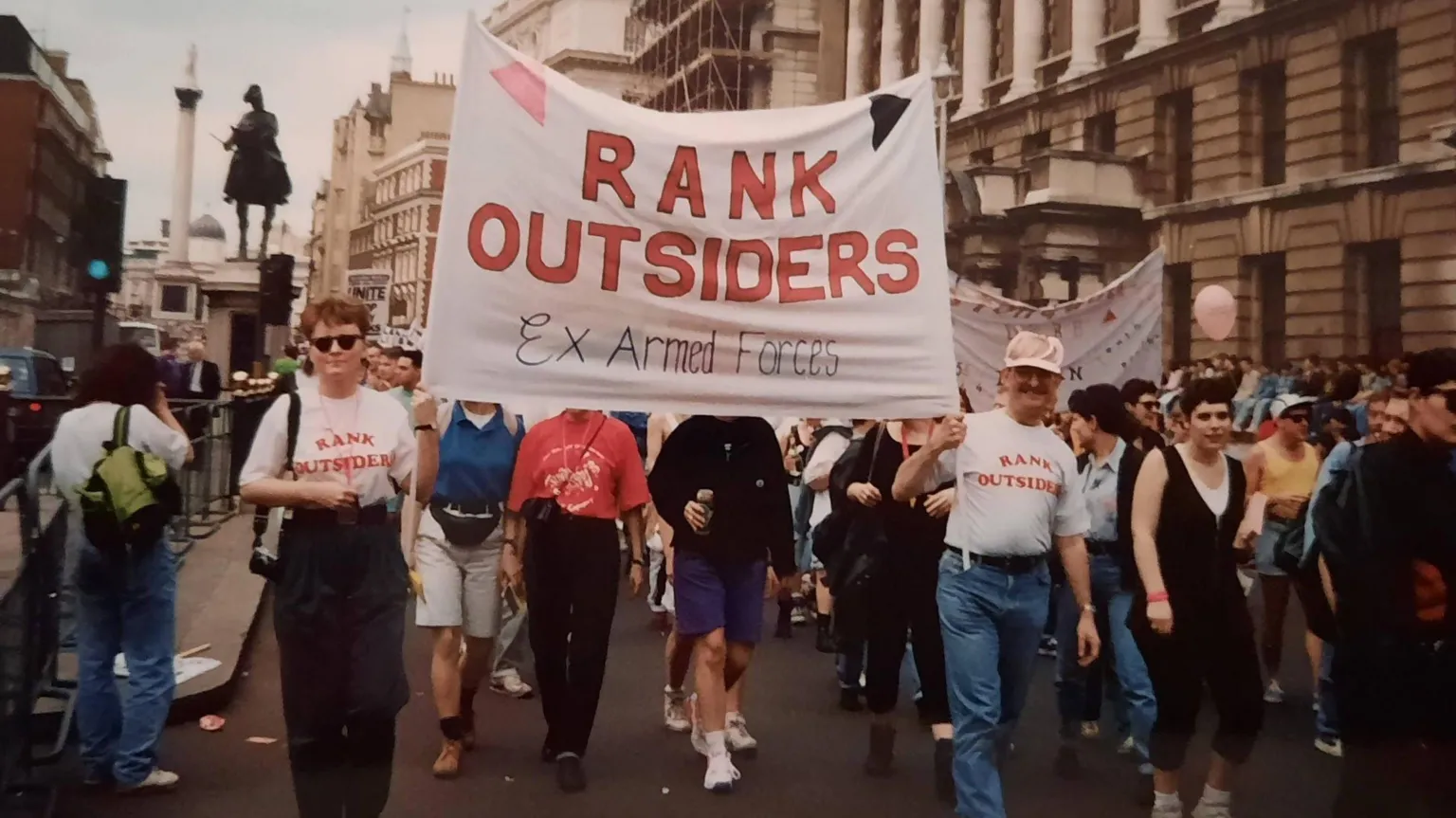Copyright pitchfork

There’s no debating the impact Steve Albini left on music. The late icon strapped himself into his guitar while throttling songs in Shellac and Big Black, changing how menacing a punk riff could sound. He oversaw the making of hundreds, if not thousands, of albums as an engineer and refused to take much credit—or money—for his part in the final outcome, whether it was Nirvana’s In Utero or Joanna Newsom’s Ys. He was a teacher by practice who poured both the mortar to build his own recording studio, Electrical Audio, and the time into showing others how to produce records themselves, answering every nerdy gear-related question you could think of for free. Since May, music fans have rushed at the opportunity to own select items from Albini’s personal collection courtesy of Steve Albini’s Closet, a new website that functions like a weekly digital estate sale. Organized by Byron Coley, the Forced Exposure critic turned record label owner and jack-of-all-music-trades, the website hosts a selection of Albini’s rare vinyl records, concert posters, weird books, vintage T-shirts, unique artwork, poker items, and more belongings each week for fans to buy. “I try to make sure there’s enough stuff on the website at the lower end of $25, that way if people just want to own something from Steve’s collection, they can afford it,” Coley says over the phone. “It may not be the greatest record, but you can put it on a shelf with an official certificate and know Steve owned this or listened to it.” Considering that Albini helped build the sound of the alt-rock underground, shouldn’t those exact tools and test pressings be immortalized in a museum? Concerned fans posed that question when they saw Steve Albini’s Closet go live two months ago. As Coley explains, institutions have reached out to Albini’s wife, Heather Whinna, requesting to display select items from Albini’s collection, like an Electrical Audio jumpsuit or his personal Shellac guitars. But the reality is that Albini amassed an unfathomable quantity of music-related items over the course of his life, and even after Whinna sorted through piles, too much remains to cram into an exhibit—nevermind that he was famously averse to praise in the first place. “If [a museum] puts a lot of care into highlighting different items in one place, whether it’s at Northwestern or elsewhere, I know he would appreciate the idea of archiving stuff, but doing it as a celebration of him as a person would make Steve uncomfortable,” says Coley. “Do you want stuff to end up in a storage room at the Rock & Roll Hall of Fame? Usually when belongings get into a single collection, they’re displayed a little bit at a time or every once in a while.” Coley knows firsthand the physical impossibility of displaying Albini’s full collection considering he’s spent months sorting through a storage unit to archive each item for Steve Albini’s Closet. Cardboard boxes claim every square inch of free space in Coley’s Massachusetts home, and there’s still no end in sight. Over a call, he discussed the impetus for the project, the unexpected finds he’s come across, and why Albini really was as singular as the history books make him appear. Pitchfork: When did you and Steve Albini first meet? How did your friendship develop over the decades? Byron Coley: I knew him for a long, long time–since he was at Northwestern. He started writing to me back in the early ’80s to send me reviews of my record reviews in New York Rocker [laughs]. Steve was one of those guys who get charged up about stuff, you know? The ’80s are when he had a bad boy persona, and a lot of people really did not like him for the stuff that he wrote. I ran Forced Exposure then, and he wrote stuff in there just to be obnoxious. People would take it very seriously and kind of freak out. Afterwards, he started rehabilitating his image and really recanting, making it clear that some of the things that he had written were not written seriously, but they probably shouldn't have been written in the first place. We were together a bunch in the ’80s. I’d see him regularly on Big Black tours and would visit Chicago, but even after I had kids in the ‘90s, he would stay with us while working in Boston or stopping through with Big Black. He lived with [my family] when we were in Boston for a month while he was doing the Pixies record. And my kids would go stay at Electrical [Audio]. I’d see him only a couple times a year, but we were always, always pals. Then it became discontinuous, going six months or even longer without seeing him. So this is forcing me to accept the fact that I won’t run into him anytime soon. How long after Steve’s death did the idea for Steve Albini’s Closet begin to take shape? Who reached out to whom? Interestingly, it was something that Steve and I had been talking about for roughly five years before he died. He was interested in divesting himself of his stuff at some point in the future. I’ve known him for a long time, and so he asked if I could help him out doing this. We talked about different strategies, but something always came up—and then COVID happened. The day that he died was actually the last time I talked to him about it, and we set a date to do it in July, after the Shellac tour. The idea was to start wrapping stuff up and maybe live somewhere warmer for a while I think. Two months after Steve died, [Shellac bassist] Bob [Weston], who I’ve known since he lived in Boston, got in touch to say, “I know you were going to do this thing with Steve, and Heather is wondering if maybe you could help with some of this stuff.” They were clearing items out of the house and Electrical Audio. It was different now, of course, but I said, “Let’s see if we can figure something out.” Steve was not really a record collector, but he had a lot of records. He just really liked music. People he worked with gave him records; he reviewed music; and he bought lots of stuff, but he was not a “collector” type of personality. Still, he ended up with lots of things. So after being enlisted, we decided to get enough stuff together to start listing items around the anniversary of his death. We're trying to do it every week until it runs out, which I think will be in a year. I'm still getting boxes of stuff occasionally in the mail, so it’s hard to really know if Heather is done going through stuff. And then there’s items I’ll run into while archiving and ask, “Did you really want to get rid of this?” And it’s a no, it just got lost in the mix because there’s a lot of stuff. How did it feel to actually see the mountain of records, clothing, zines, and other items Steve had been holding onto? I didn’t think it was going to be quite as much stuff as it was. I assumed it’d be a couple thousand things—pretty easy to deal with. The fellow who’d been moving stuff around before we dealt with it, Tim, finally said, “We’ve got everything to a point where Heather weeded out stuff that she wants, but most of Steve’s items that she definitely doesn’t want are in this storage space.” Tim sends me a picture. It’s boxes and boxes in a storage unit, but it still didn’t capture how much was packed in there. So I flew out, rented a truck, drove to the storage space, and then Tim and I spent seven hours loading boxes into the truck. I drove it all back to Massachusetts and unloaded it into my son’s room, odd spaces, wherever it could fit. The next couple months were spent sorting through Steve’s items and realizing, my god, this is enormous. Some is collectible material that anybody would be interested in; other pieces are interesting even if not official collectibles; and then there’s stuff that would be cool to fans of Steve’s because it’s an item he worked on or reviewed or owned. Like, oh, this is a copy of a record he played when he was in college, that kind of thing. Are you doing all of the inventory yourself? Opening these boxes, sorting items into categories, researching their context, documenting them online—it seems exhausting. Oh yeah. After dividing Steve’s belongings, I got everything archivally stored. That gave us a better reference for just how many items there were, and we decided to put some on the [Steve Albini’s Closet] website. So I put up about 400 things on the website. I thought it would be a fairly slow, soft opening. Then the first batch sold out so fast: All 400 items gone in a few hours. The disadvantage of doing it yourself is that you’ve got to clean it, take the pictures, type a record description, grade the item, and all these things—like figure out if Steve actually worked on the record or not, because sometimes he used a fake name or asked not to be credited by a band. It ends up being actual research. That processing takes at least 10-15 minutes per item. After a couple weeks of doing this, I decided roughly 100 pieces per week is a good amount to list online. That’s a workload of 40 or 50 hours a week that I can do without feeling overwhelmed. You’ve also gotta factor in packing every item, printing labels, and dropping it off to ship. Plus, I create a certificate of authenticity for each item that’s printed, embossed, initialed, and put in a bag. Little things like that take more time than you’d expect, but 100 a week is doable. It’s a full-time job, but I still have a store, writing gigs, and readings that I have to juggle around. Do you get a cut of the listing prices for the work that you’re doing? Does it all go to Heather? Yes. Heather gets 75% of the total money made, and I get the other 25%, but the expenses come out of that 25%, too. Friends of mine who do this work pushed me to take 50%, but this is about getting money for Heather. I told Steve I would do this for him. And Steve was not a guy who wanted to squeeze the last dollar out of anyone, so I don’t want this to become something that’s really insane in terms of how things are priced. What’s your criteria for discerning which items to sell on Discogs or eBay? The plan was always to sell directly to people instead of going through established places like eBay and Discogs where you end up losing 25% off the top of anything you sell. Steve and I had talked about that: how do you cut out these middleman people who just gouge you for hosting? So my wife, Lili, who’s an IT person, built the website. But some things are impossible to assign a price to. For example, today I listed a fully signed copy of the first Cheap Trick album—one of Steve’s key records. It’s also got a ticket stub for a Cheap Trick show he went to. That’s a cool thing, but what is it worth? $500? More than that? I have no idea. Instead of arbitrarily setting a price, I thought it’d be more interesting to upload it there, set a minimum price tag, and see if somebody really wants it. Iggy [Pop] did a self-portrait painting for him that’s kind of amazing with a huge inscription on the back. There’s a lot of items like that: records, test pressings by Steve’s bands, signed stuff from famous people. I’m going to start doing one auction every week. You’ve introduced this certificate of authenticity that accompanies every purchase. Why did you decide to make those? When I was talking to Steve originally, he talked about signing items. Obviously, that’s not possible now, but I still wanted to do something special. Because I own a lot of Big Black posters he gifted me over the years, I photographed the font on a poster I always loved—a show at [defunct Boston venue] the Channel with Meat Puppets—and gave it to Rick Myers, a designer, along with the other info for a certificate. To be easily mailable, I sized it at seven inches by seven inches to fit with a 7" record. For the emboss, I took the Black Cat logo because Steve was a huge fireworks guy and created a custom embossing stamper. Then it’s initialed or signed in a different colored ink so people can’t knock ‘em off. Rick did a great job putting it all together. Mainly I wanted to do something that Steve would’ve approved of and thought, “Oh, that’s cool!” So far, it seems like buyers appreciate them, too. There’s a category on the site called “mysterious bargains.” How do you decide what qualifies? I’m not really sure. I wanted to have stuff that would just be really cheap, or an item with a lot of copies. Even if it’s a flyer for a show or a weird novelty item, like poker chips or something fun. We were really excited by that idea, but haven’t run into much that fits in the category. We contemplated taking that category off the website, but we’re leaving it on for now to see what happens. What are some of the most unexpected items you’ve sorted through? To find out how into baseball he was has been pretty interesting. I didn’t realize his softball and baseball career—as a fan and a participant—was quite as active as it was because I was never in Chicago much during the summer, apart from selling records at Pitchfork Festival. He loved baseball and softball. He’s got a ton of team shirts, signed baseballs, books about baseball, just lots. He’s got a Led Zeppelin box set with the nicest inscriptions by Robert Plant and Jimmy Page that I’ve ever seen. They obviously really enjoyed hanging out with him. I can remember asking him, “How was it [recording with them in 1997]?” And he goes, “Once you’ve spent a year listening to Led Zeppelin road stories, and then you’ve got the Stooges and you hear all the Stooges road stories, you lose interest in everybody. Nobody else can really touch them.” There are hundreds of stories out there about Steve by bands, former coworkers, poker players, and countless others. What gets lost in that broader discussion of what Steve was like? His public persona was much more mutable, but his private self was a lot more straight ahead, although I think they merged into one personality as he grew older. It’s pretty interesting to see how far he went over to the good side, helping people out and doing good work, which was so antithetical to the way that people viewed him in Big Black and the discussions roiling around. People who know him as a wisecracking guy who was into fireworks or whatever have a tendency to dismiss him as somebody too male, too aggressive, too whatever. That was not central to anything that he did. If somebody was being a pain in the ass, I don’t think he ever developed the ability to be overly patient with someone he didn’t feel great respect for. But apart from that, he was such a good guy and was so generous. A lot of kids have written to me about their parents who were in bands that Steve worked with, and they share how grateful their parents were for the work Steve put into it. He was seriously a really hardworking guy. If he took stuff seriously, it’s because he gave a lot of himself to others. How has sorting through Steve’s belongings altered your lifelong vision of him? The collective feeling that I get is that he was not static. I mean, he was static in certain regards, and he and I argued about music all the time. I thought he had about the worst taste in music of anybody that I knew and knew less about records than many, many people [laughs]. This was something we would endlessly go at it over. But he had certain fixed ideas about how things should be done: Do things as well as you can and create something that could last—not to create a legacy, but because there’s a philosophy that creating good things makes it more likely for other good things to happen. Similarly, if you create bad things, it creates more opportunity for bad things to happen. There’s an ethereal balance of actions and products. He was shockingly dedicated to creating good things, whether it was a meal, a record, a piece of art. I loved his art. He made this incredible sculpture when my wife and I got married in 1986. He got to the wedding late because they wouldn’t let him on the plane with this kinetic sculpture, a big motor with a grinder wheel on it and a ball-peen hammer that was held to the grinder wheel with springs. If you reached inside to turn it on, all of a sudden there was a tower of sparks flying everywhere and you couldn’t fit your hand back inside to turn it off. It was incredible. He had it super packed up, and when they tried to get it onto the plane, TSA was like, “I don’t know what that is, but it’s not getting on a plane.” So Steve took the whole piece apart and rebuilt it later. Even if it was outside my field of interest, he could generally get me curious about whatever the heck it was he was working on. The Secret Santa stuff he did was wonderful. Really, the overarching takeaway was how generous he was with his time. The older you get, you realize what a finite quantity of it exists. Heather obviously influenced him a lot in terms of the direction he was going, and they were together for a good long time. She helped bend him towards the light. And when he got a taste of it, he was much more interested in that than the transgressive culture of the early ’80s. It was fascinating, but it was ugly. As time went along, he wanted to stop being attracted to ugliness and start pursuing the creation of more beauty—and I think he did a really good job.



